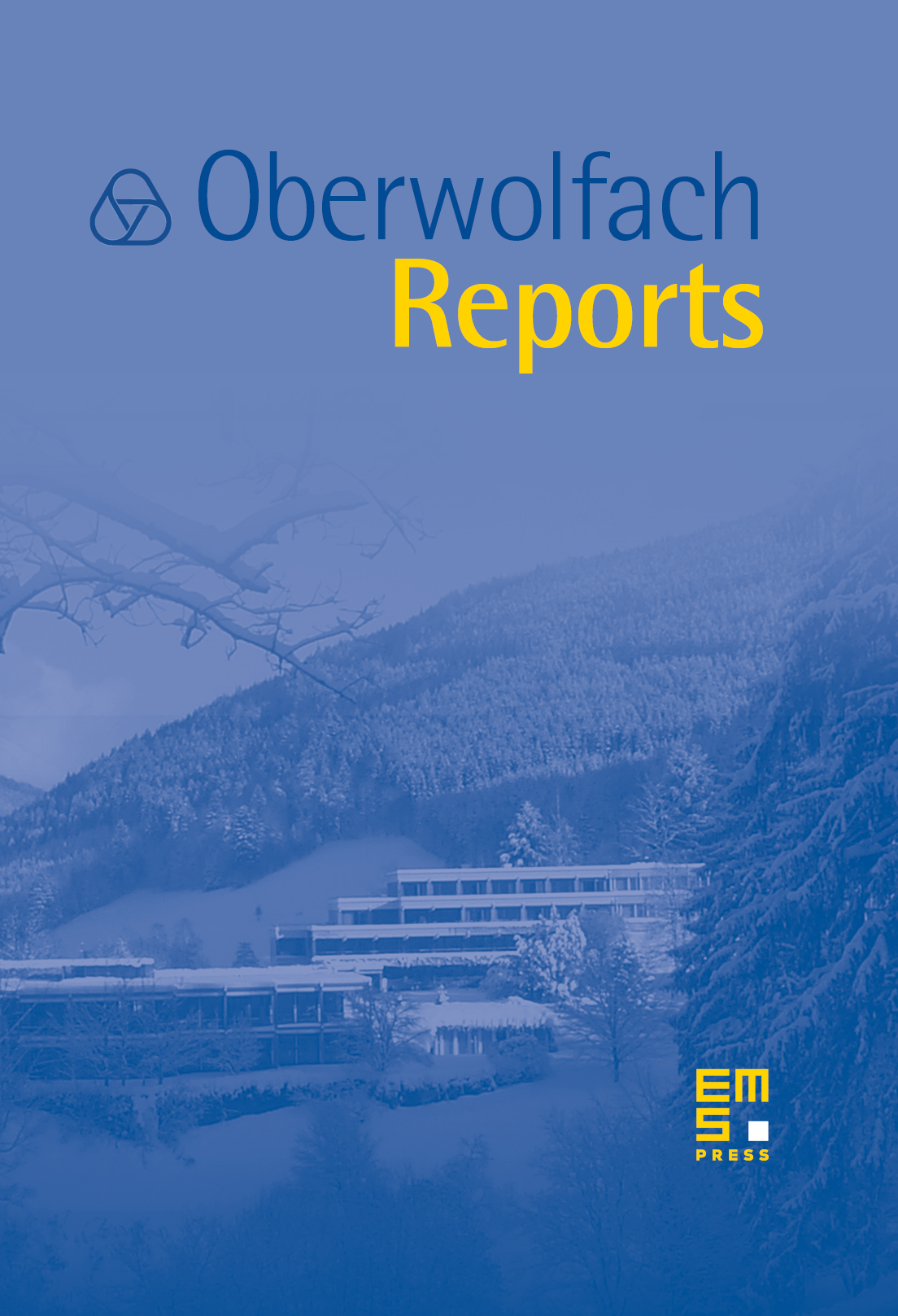Mini-Workshop: Nonlinear Spectral and Eigenvalue Theory
Jürgen Appell
Universität Würzburg, GermanyPavel Drábek
University of West Bohemia, Plzen, Czech RepublicRaffaele Chiappinelli
Università degli Studi di Siena, Italy

Abstract
What is the state-of-the-art of abstract spectral and eigenvalue theory for nonlinear operators, and how may this theory be applied to nonlinear equations involving the p-Laplace operator? These two questions have provided the main focus of the Mini-Workshop. Accordingly, the main topics covered by the talks on this Mini-Workshop have been
- spectra for nonlinear operators,
- nonlinear eigenvalue problems, and
- equations involving the p-Laplace operator.
Of course, these three topics are not mutually independent, but there are various interconnections between them which are of particular interest. For example, sets of eigenvalues (point spectra) may be regarded, as in the linear case, as an important part of the spectrum; conversely, nonlinear eigenvalue theory is one of the historical roots of nonlinear spectral theory. Moreover, the p-Laplace operator is one of the most interesting homogeneous (though nonlinear) operators which may not only serve as a “model operator” in nonlinear eigenvalue problems, but also occurs quite frequently in various applications to physics, mechanics, and elasticity.
The aim and scope of the Mini-Workshop was to bring together experts on nonlinear spectral analysis and operator theory, on the one hand, and more application-oriented specialists in eigenvalue problems for nonlinear partial differential equations (like the p-Laplace equation), on the other. As a result, 15 leading experts in the field from 10 different countries discussed recent progress and open problems in the theory, methods, and applications of spectra and eigenvalues of nonlinear operators.
Cite this article
Jürgen Appell, Pavel Drábek, Raffaele Chiappinelli, Mini-Workshop: Nonlinear Spectral and Eigenvalue Theory. Oberwolfach Rep. 1 (2004), no. 1, pp. 407–438
DOI 10.4171/OWR/2004/08